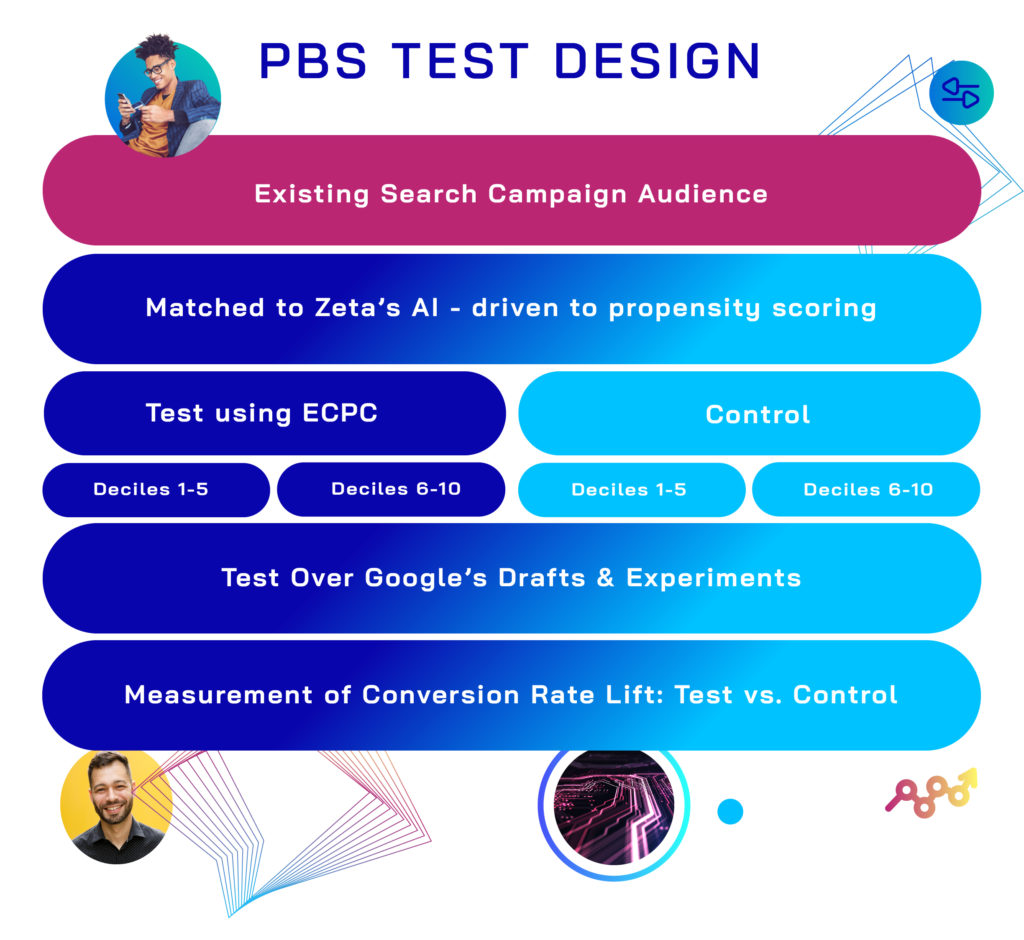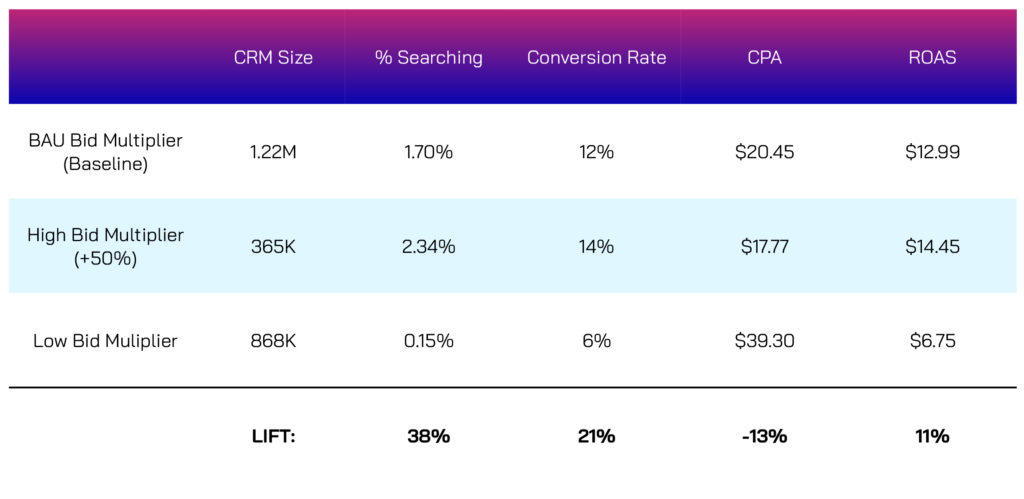
Articles | September 29, 2021 | 3 min read
What Is People-Based Search and How Does It Work?
Search is easily one of the top digital channels at driving higher conversion rates. Savvy marketers are always looking to leverage this medium to optimize their search campaigns. Google takes most of the guesswork out by providing recommendations using user data gathered from web activity. This is where Zeta Global steps in — bringing in offline data to enhance Search Engine Marketing (SEM) efforts through People-Based Search.
People-Based Search (PBS for short) serves to optimize a search campaign bid strategy. But marketers often question what is meant by the term “People-Based.” PBS takes an audience-based approach to determine appropriate bid multipliers. A lookalike model is built using a sample of your top-tiered customer list and then is used to score the search audience into propensity deciles (aka a consumers’ likeliness to convert). Bid multipliers are then set based on these deciles, with the bid increased for higher propensity converters and lowered for those who are least likely to convert. PBS can target either your CRM list — like leads sitting in your funnel or website visitors — or cold prospects.
PBS is largely audience agnostic, but the demand nature of paid search favors mass-market verticals or known brands, especially when targeting prospects. Niche markets and boutique brands can still benefit from the PBS approach, but at a slower pace with strategic implementation. One way to measure demand and determine how long it would take to reach statistical significance is to roughly measure the search rate of a similar audience.
Search impression share is the percentage of impressions that your ad receives compared to those that it was eligible for, so it is crucial to mind your ad quality, keyword match types, and list of negative keywords because testing over Google Search will be interdependent of the Google ecosystem. You can use the optimization score to help you estimate how well the PBS test will perform within the Google environment. Google will take the PBS goal to improve the conversion rate and make recommendations for bidding, keywords, and ad improvements in the goal of improving overall performance and efficiency.
One way to leverage the optimization score of a standing campaign without affecting its performance is to launch PBS over Google’s Drafts and Experiments. You can use drafts to segment out the campaign and apply the PBS bid strategy, then create an experiment to measure results. When a user performs a search, either the original campaign or the experiment will randomly load based on how you’ve split the traffic share between the two. The added benefit to this is that the original campaign serves as another level of control to measure against.
Speaking of test and control, PBS is designed so that the higher propensity to convert segment (deciles 6-to-10) receive a bid increase of 50% and are then measured against their hold-out group with no bid adjustment. The low propensity to convert segment (deciles 1-to-5) have their bid decreased by 50% and are also measured against a control with no change to their bid. In order for this bid adjustment to take effect, a bid strategy of Enhanced CPC (cost-per-click) is used. Otherwise, the bid adjustment feature is used as a means to determine attribution for reporting.

PBS has driven lifts in conversion rates as high as 20% by helping capture 38% more users actively searching. Moreover, it can help lower cost-per-acquisition by 13% on average and improve ROAS by 11%.

Contact us today!
What Is People-Based Search?
People-Based Search (PBS for short) serves to optimize a search campaign bid strategy. But marketers often question what is meant by the term “People-Based.” PBS takes an audience-based approach to determine appropriate bid multipliers. A lookalike model is built using a sample of your top-tiered customer list and then is used to score the search audience into propensity deciles (aka a consumers’ likeliness to convert). Bid multipliers are then set based on these deciles, with the bid increased for higher propensity converters and lowered for those who are least likely to convert. PBS can target either your CRM list — like leads sitting in your funnel or website visitors — or cold prospects.
PBS is largely audience agnostic, but the demand nature of paid search favors mass-market verticals or known brands, especially when targeting prospects. Niche markets and boutique brands can still benefit from the PBS approach, but at a slower pace with strategic implementation. One way to measure demand and determine how long it would take to reach statistical significance is to roughly measure the search rate of a similar audience.
Tips for Using People-Based Search
Search impression share is the percentage of impressions that your ad receives compared to those that it was eligible for, so it is crucial to mind your ad quality, keyword match types, and list of negative keywords because testing over Google Search will be interdependent of the Google ecosystem. You can use the optimization score to help you estimate how well the PBS test will perform within the Google environment. Google will take the PBS goal to improve the conversion rate and make recommendations for bidding, keywords, and ad improvements in the goal of improving overall performance and efficiency.
One way to leverage the optimization score of a standing campaign without affecting its performance is to launch PBS over Google’s Drafts and Experiments. You can use drafts to segment out the campaign and apply the PBS bid strategy, then create an experiment to measure results. When a user performs a search, either the original campaign or the experiment will randomly load based on how you’ve split the traffic share between the two. The added benefit to this is that the original campaign serves as another level of control to measure against.
Speaking of test and control, PBS is designed so that the higher propensity to convert segment (deciles 6-to-10) receive a bid increase of 50% and are then measured against their hold-out group with no bid adjustment. The low propensity to convert segment (deciles 1-to-5) have their bid decreased by 50% and are also measured against a control with no change to their bid. In order for this bid adjustment to take effect, a bid strategy of Enhanced CPC (cost-per-click) is used. Otherwise, the bid adjustment feature is used as a means to determine attribution for reporting.

The Use Case for People-Based Search
PBS has driven lifts in conversion rates as high as 20% by helping capture 38% more users actively searching. Moreover, it can help lower cost-per-acquisition by 13% on average and improve ROAS by 11%.

Want to Learn More?
Contact us today!


